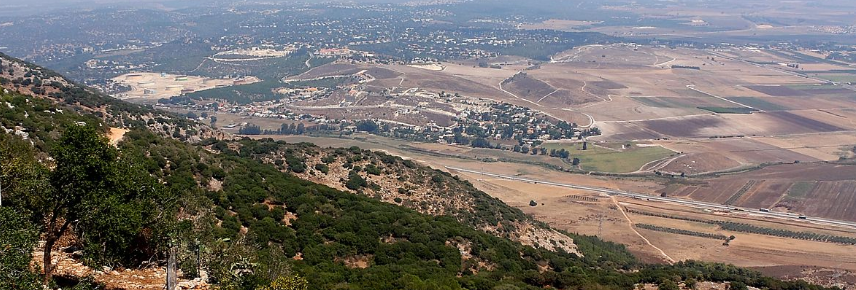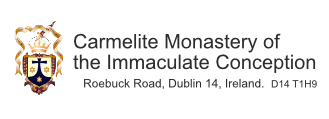“Carmel was born in the wilderness”

- View from the top of Mount Carmel, Israel -
Mount Carmel in the Holy Land was looked upon as a place of beauty and holiness long before the Christian era. There, in the 12th and 13th centuries we find a group of men living a predominantly hermit life in a simple fraternity.
Their goal – total allegiance to Jesus Christ.
Their inspiration – Elijah, the fiery prophet of Carmel, “standing in the presence of The Living God”;
on fire with zeal for His Kingdom .
Their way of life – prayer, mainly in solitude; “pondering the law of the Lord day and night”.
Pervading all, the gentle presence of Mary, Queen, Beauty of Carmel, whom the Order came to know as Mother, Patroness, sister and friend. Dispersed to Europe towards the end of the 13th century, these rugged hermits from the East had to adapt or die. They adapted, moving towards a way of life more akin to that of the existing European Orders of friars, while never forgetting their roots in the solitude of the Holy Mountain.
In the mid 15th century communities of women were affiliated to the Order.
Carmel is like a river which, over the centuries,
flowed out in many streams. One such stream is
the Discalced Carmelite Nuns.
The year is sometime around 1560.
In the Carmelite Monastery in Avila, Spain, Sr. Teresa d’Ahumada is in a quandary. For years she has been torn between conflicting loyalties. On the one hand is a strong inner call from God to deepen her relationship with Him in the loving intimacy of solitary prayer and contemplation: on the other, the call of the busy social life of her large community which appealed strongly to her warm, out-going personality.
Finally, God won. Looking about her she saw the Church apparently in chaos. Scandals abounded. “The world is on fire” as she put it. What could she do? She decided: She would follow Jesus as perfectly as possible. ” Return to her roots”, to the primitive ideal of the Order with its strong emphasis on prayer and solitude, living in the Presence of the living God. … “Adapt as needs required. Rather than go out to the desert she would create a desert space in the city.”
In 1562, together with a few like-minded sisters she left her large community and founded a small, poor convent called St. Joseph’s, where she and her sisters would be free to give their entire attention to living for God and His people in a life of prayer and contemplation.
The walled city of Avila in Spain Teresa enriched the original inspiration of Carmel with her own special gifts and before she died in 1582 had founded 18 convents in Spain. She had also helped and inspired St. John of the Cross to do a similar work among the friars. After Teresa^s death the order spread rapidly world wide.
In Ireland, foundations were made, amid high adventure and persecution, in the 17th century.
Today there are 11 Carmels in Ireland – see … www.carmelitesisters.ie.
